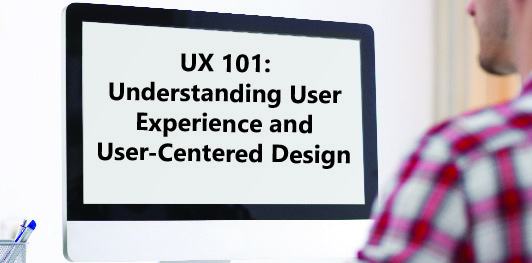Setting the Stage
Our clients have a wide range of digital aspirations from increasing productivity and customer loyalty to decreasing training costs or development time. Our Digital Experience Design capabilities can help them get there but, too often, we see a real struggle to understand, 1. what User Experience is; and 2. what it takes to do really great human centered design.
This post aims to begin to answer those questions by offering a high level introduction to User Experience and User-Centered Design.
So, what is User Experience (UX)?
That’s the $64,000 question isn’t it? After 12 years in the field, I’m still intrigued by all the variation I see and hear when it come to defining such a seemingly easily understood term. At RBA we broadly define UX in two ways:
“The quality of the interactions people have with technology.”
“A professional field that employs the principles and techniques of User Centered Design.”
Nice and broad huh? OK, so, what is User-Centered Design (UCD)?
Glad you asked! Seriously though, this is the better question.
User-Centered Design is 1. A philosophy that places the people who will be using what we are creating at the center of attention throughout the project and 2. A process that actively seeks out and accounts for users’ cognitive, emotional and behavioral factors
UCD has two main objectives:
1. Understand, empathize with & advocate for the people who actually will use what we’re producing.
2. Design a solution that delivers on user needs while balancing other priorities.
But simply thinking about our audiences and trying to put ourselves in their shoes is not enough. In order to practice user centered design, we MUST have direct interaction with the actual users of what we are building and/or Access to data the users have generated. Alright, so, that’s all good and theoretical but what do UX folks actually do?
Depending on who you ask, the answer to this question is almost as variable as the definition of UX. At RBA, UCD looks a little like this:
Design Research – Gain insight; validate decisions
Experience Strategy – Define audiences; articulate approach
Interaction Design – Create structure; shape behavior
Visual Design – Engage audiences; elevate brands
Conclusion
In short, UX and a user-centered approach play a large role in helping our clients realize their digital aspirations. As I mentioned in beginning, this post offers a high level introduction to UX and User-Centered Design. Be on the lookout for additional “UX” 101 posts covering Design Research, Experience Strategy, Interaction Design, & Visual Design and a deeper dive into the technical elements of user experience design, including Information Architecture.

